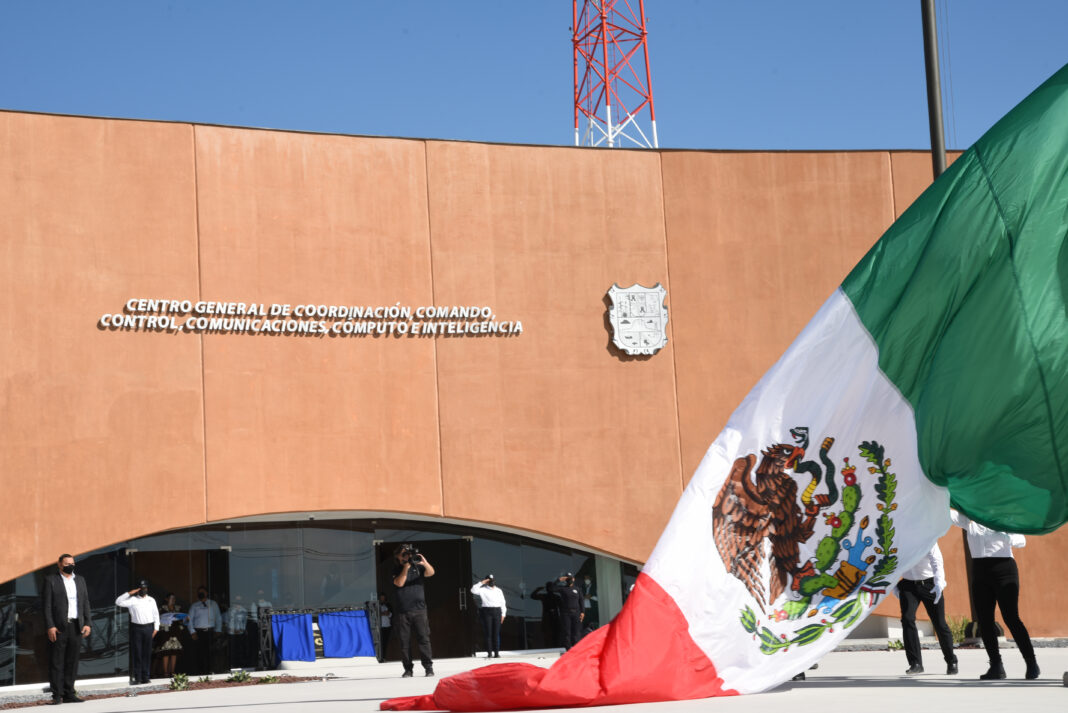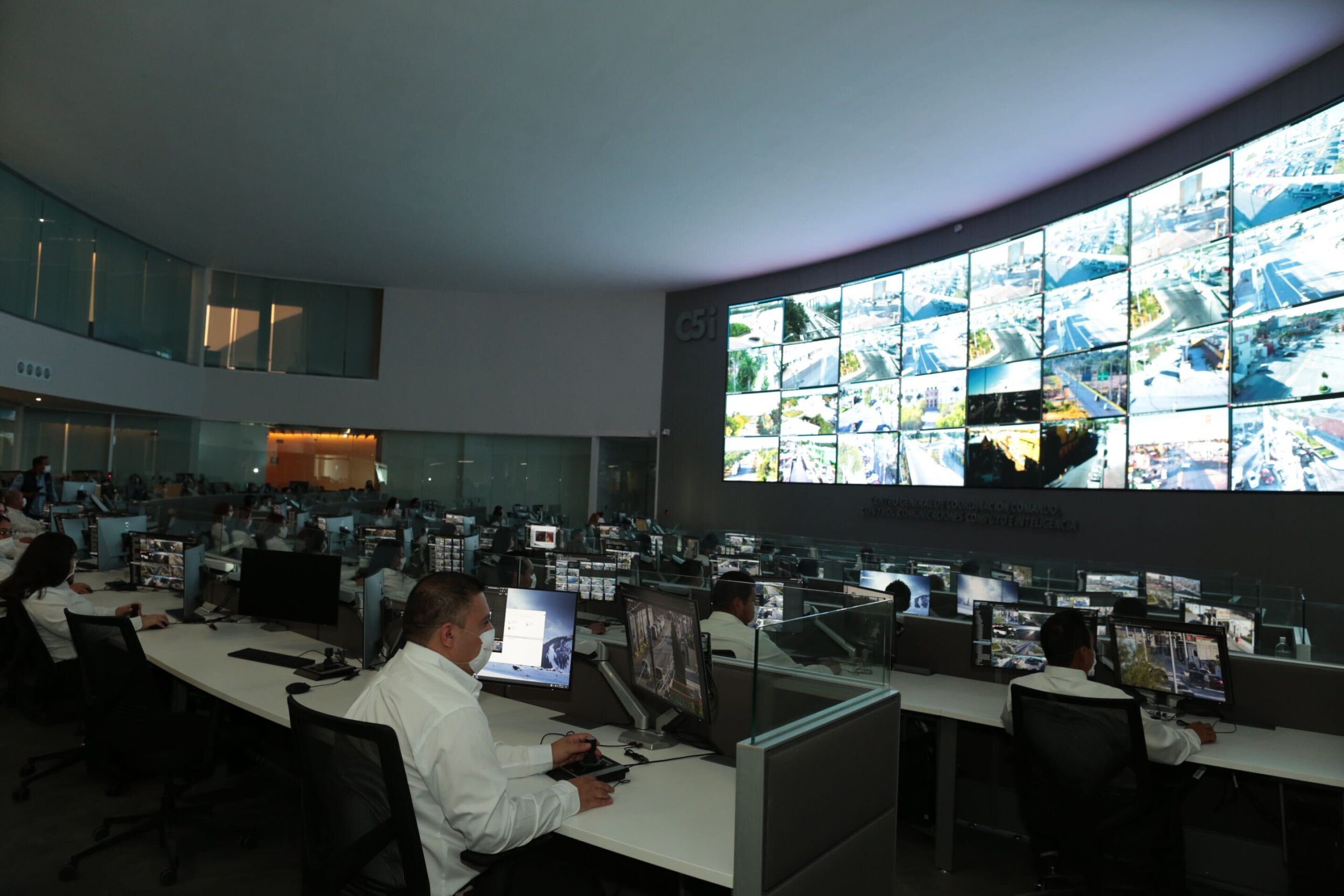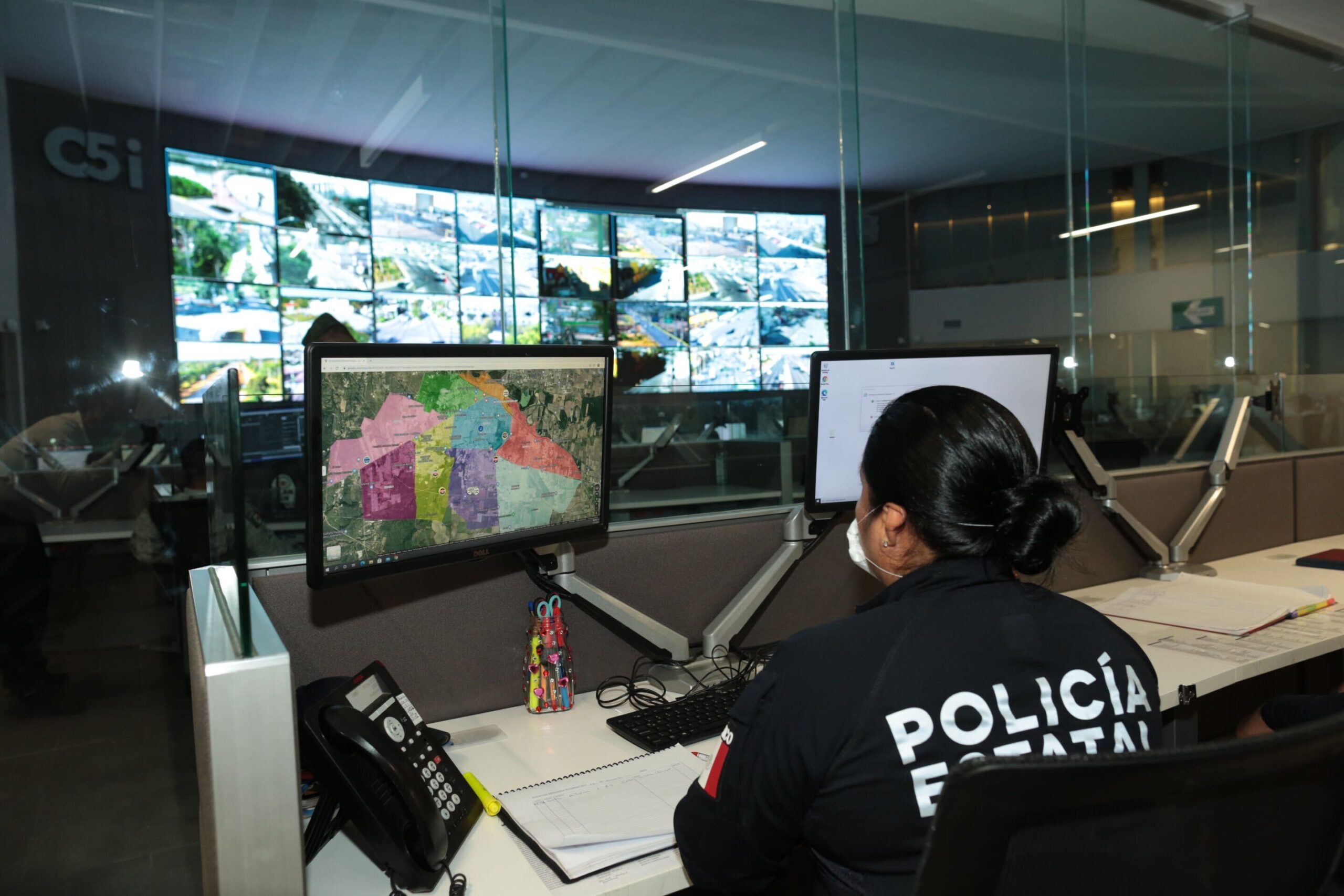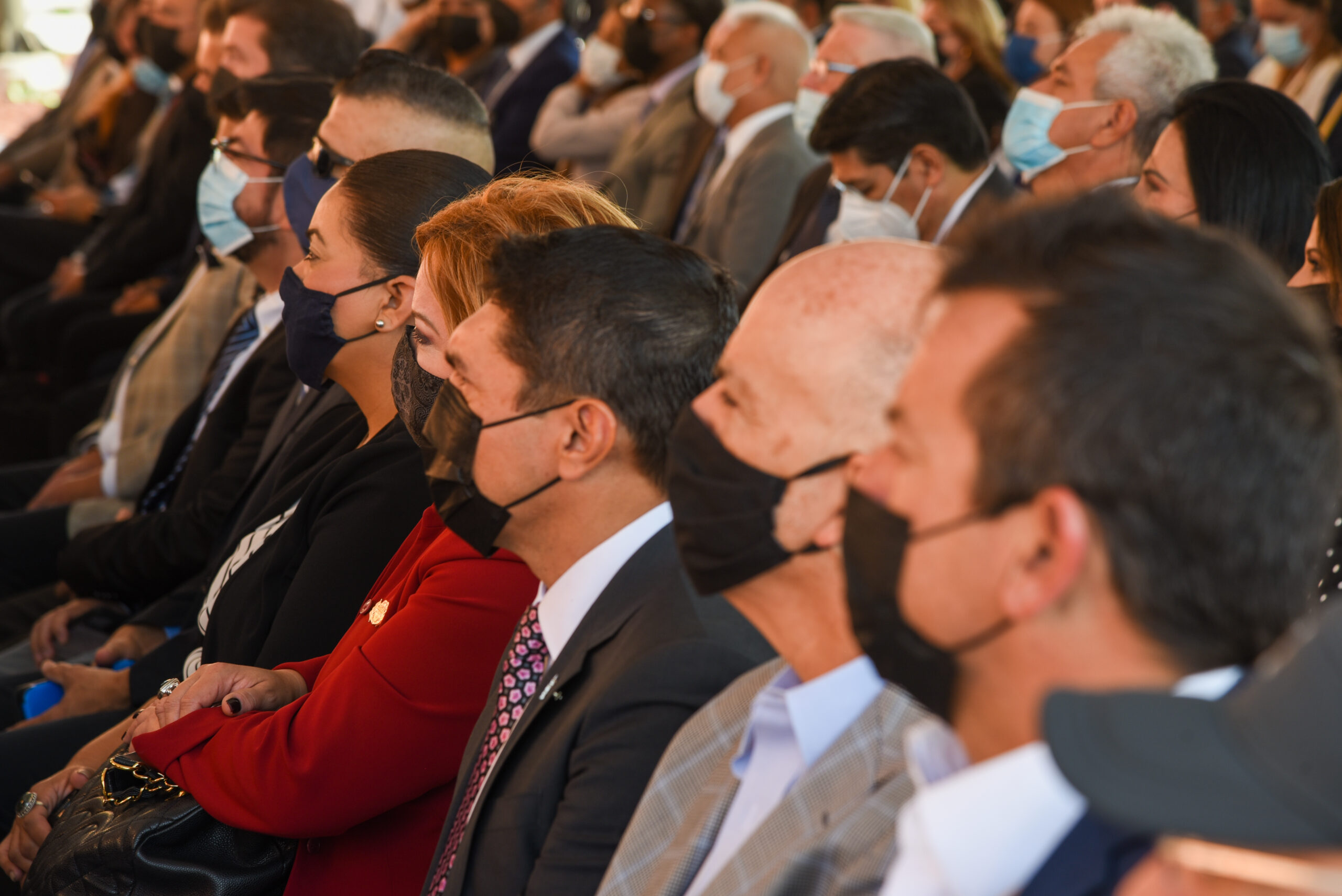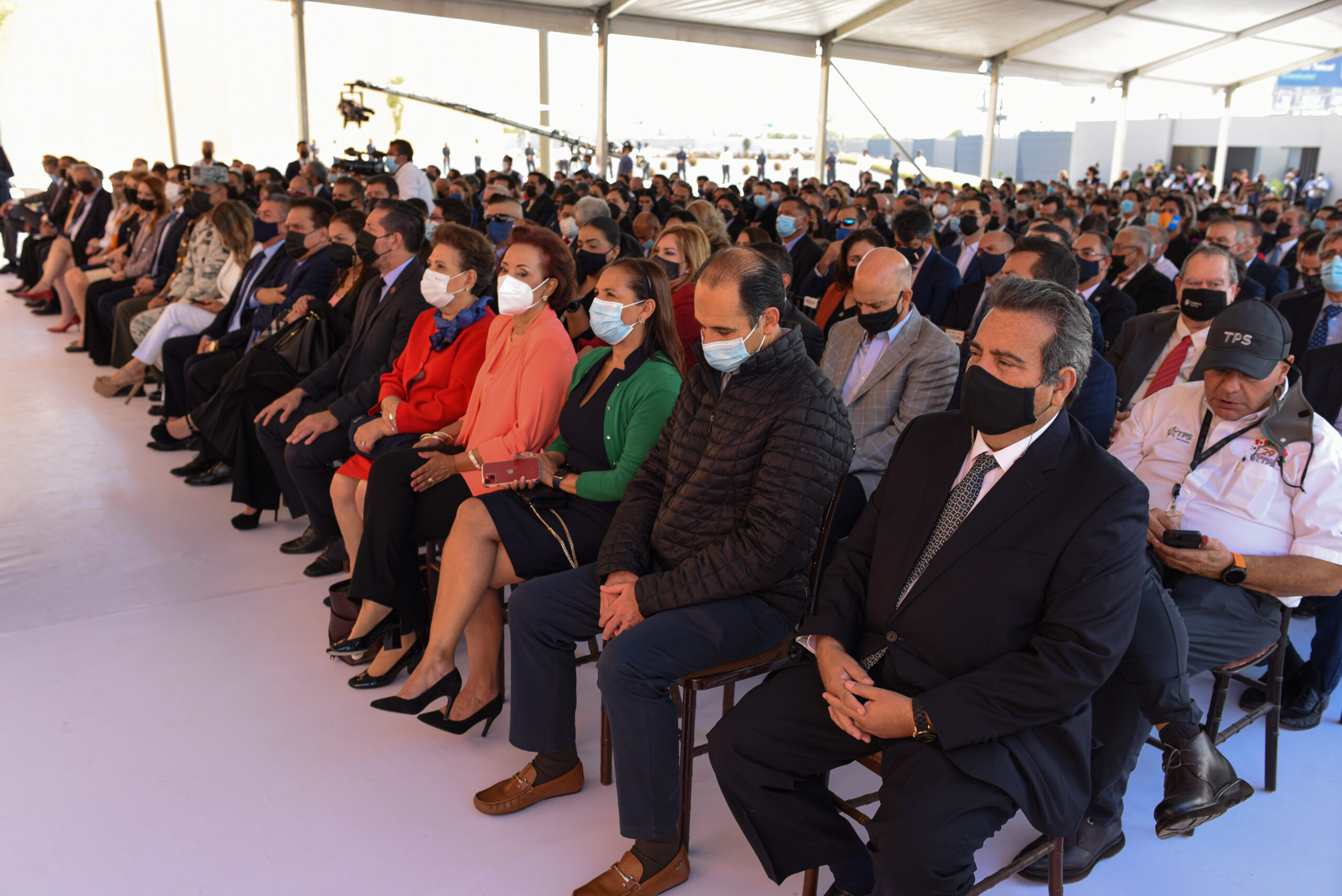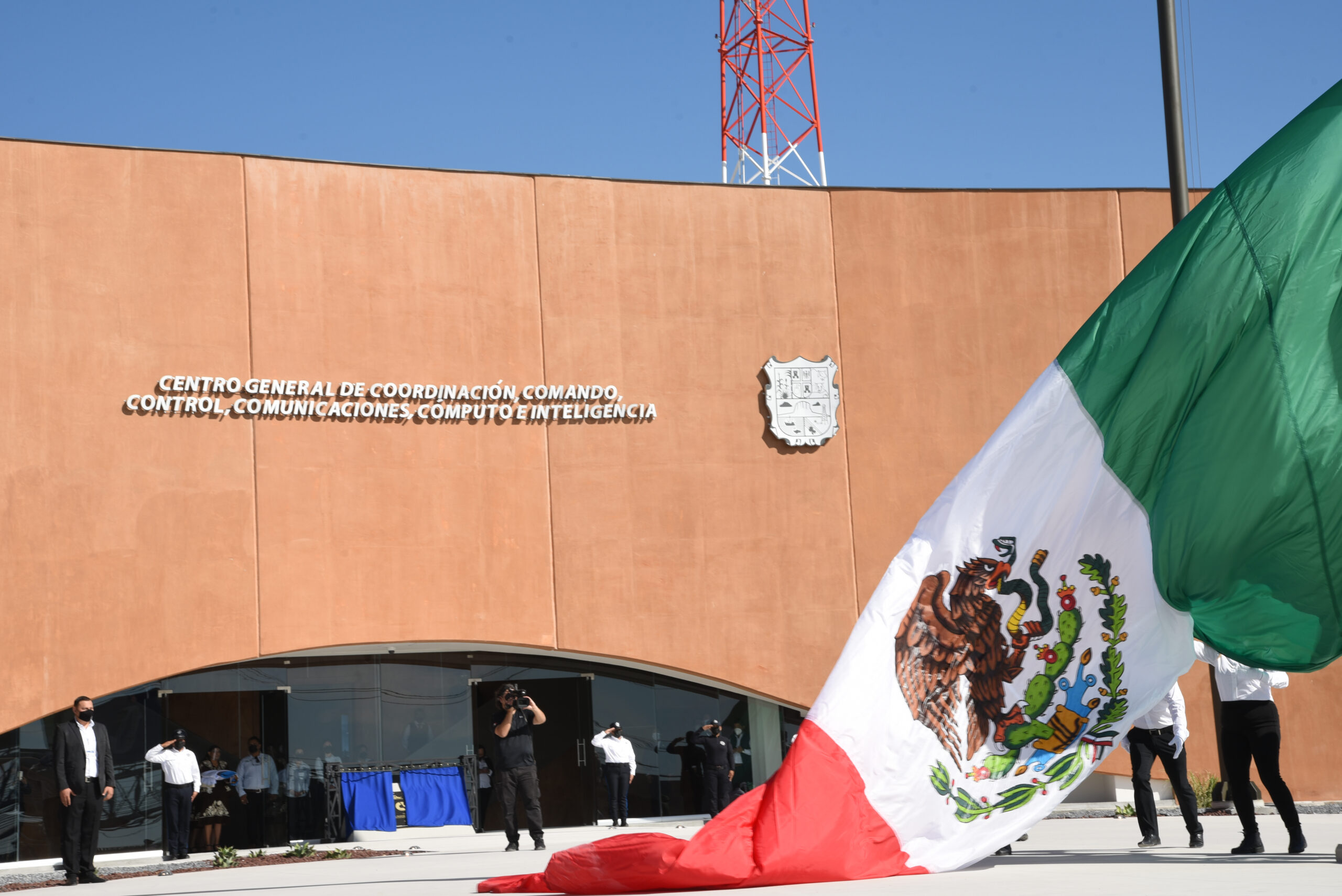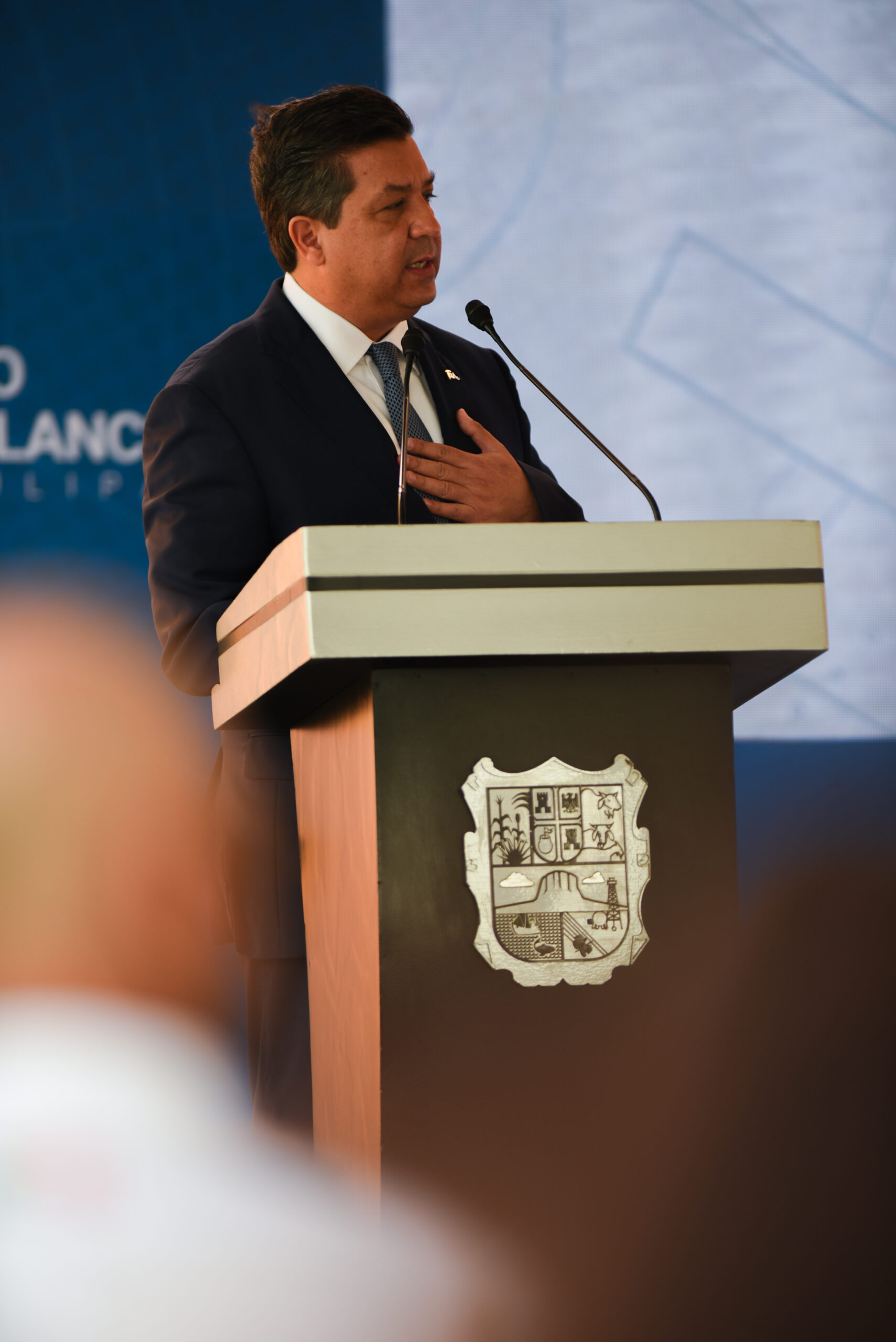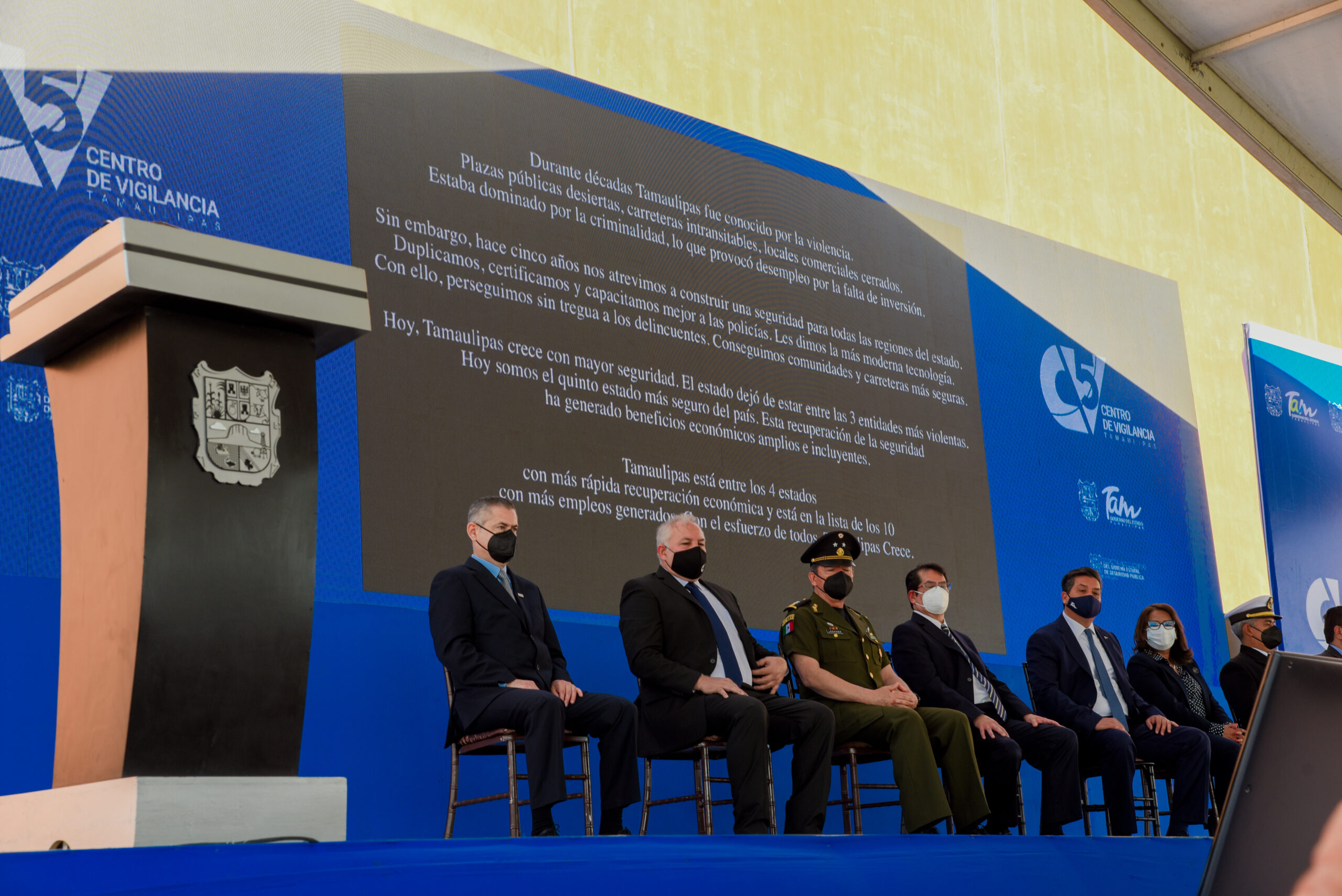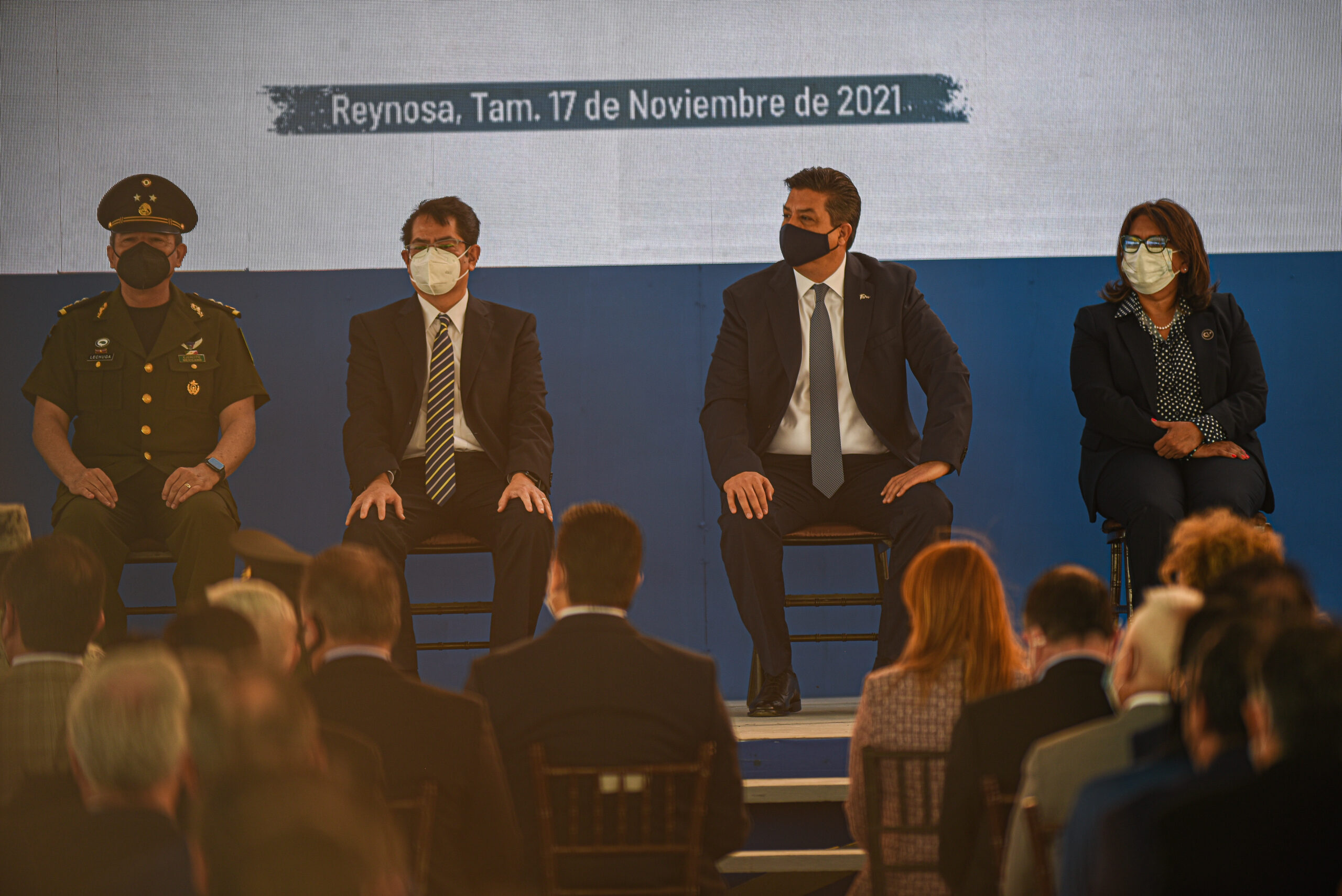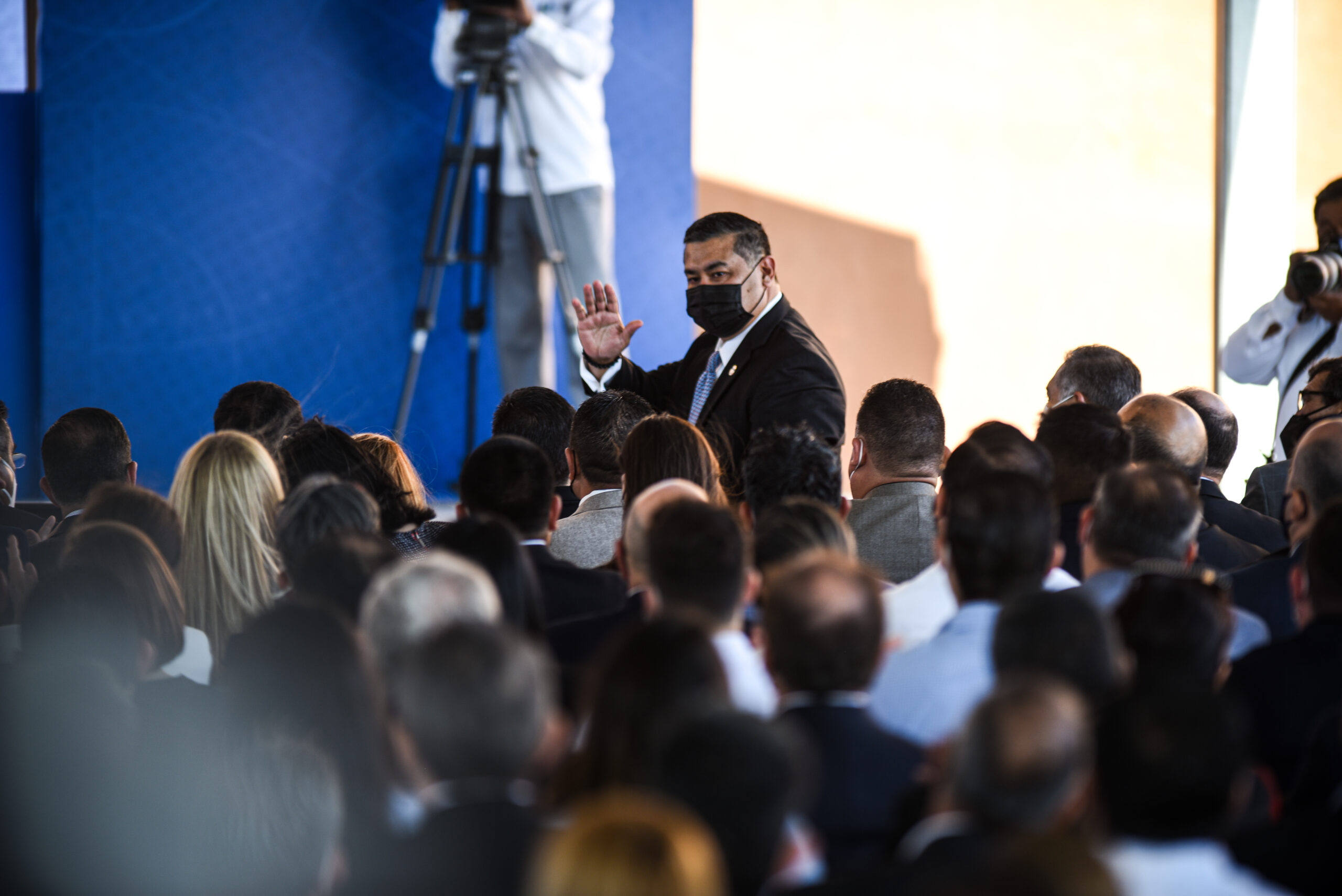A new building dedicated to public safety south of the Rio Grande that boasts a network of nearly 5,000 state-run surveillance cameras that monitor the Tamaulipas-Texas border was officially inaugurated in Reynosa on Wednesday.
Local, state and federal officials from both sides of the border attended the inauguration, including Hidalgo County Judge Richard F. Cortez, McAllen Mayor Javier Villalobos, and Border Patrol Deputy Chief Patrol Agent for the Rio Grande Valley sector Joel Martinez.
“It’s a center of command,” Silvia Maribel Pesina Torres, Tamaulipas’ public safety executive secretary, said, “because from here, operations are led across 25 municipalities which fall under the center’s vigilance.”
The Center for Coordination, Command, Control, Communications, Computers and Intelligence — also known as C5 — is a 5,000-foot facility where staff monitors activity across different parts of the state, takes emergency calls, and uses plate readers to help them identify vehicles.
The central room has a video wall broadcasting multiple live pictures of different cities throughout Tamaulipas. Some of the cameras zoom in and out for better observation. Rows of employees sit at terminals below accessing specific cameras and determining locations.
“I wasn’t sure what to expect,” Villalobos said after touring the facility. “What’s amazing is the cameras and the range of the cameras. I thought they would be pretty decent but no, we’re talking about amazing capabilities.”
Areas are also dedicated to Tamaulipas state police, the National Guard and federal officers who form part of the national defense, or SEDENA, to allow them to relay information back to their base.
Four other similar regional centers, known as C4s, will continue operating in Victoria, El Mante, Tampico and Nuevo Laredo, but will be connected to the one in Reynosa.
Tamaulipas Gov. Francisco Javier Garcia Cabeza de Vaca employed a reflective tone during his speech.
“Five years ago, the main commitment I made with Tamaulipas families was to re-establish order, peace and the rule of law in each corner of our state,” he said. “Now, five years later, we have doubled the size of our law enforcement.”

He cited several initiatives created under his administration, like Angeles Azules, to enhance safety on roadways, and the special forces team known as GOPES — or Grupo de Operaciones Especiales — that often confronts actors of organized crime.
The governor took the opportunity to mention declining crime rates.
“After five years under my leadership,” Cabeza de Vaca said, “Tamaulipas has abandoned the list of the most violent states in the country. Today, our entity is on the list of the five states with the lowest criminal indices, according to national data.”
Confrontations between law enforcement, either state or federal, and members of organized crime, continue to threaten the lives of people residing or traveling through Tamaulipas.
Shootouts that broke throughout Matamoros on Oct. 23 claimed the life of an innocent bystander and ended with four dead cartel members. In June, 19 Reynosa residents died after an internal dispute between cartel factions led to the fatal shootings.
Most recently, in Nuevo Laredo last week, at least four cartel members and a military member were killed in shootouts in that city.
Although the network includes state-operated cameras, business owners have the opportunity to set up cameras in their establishments and grant surveillance access to C5. It would be connected to the vast network and would appear on the system when prompted by a panic button, the governor explained.
Cabeza de Vaca said the state government aims to focus on dangerous fugitives from the law with the help of U.S. agencies.
On Wednesday, D.C. officials from the Department of Homeland Security were present among those in attendance. Cabeza de Vaca said Mexican officials share intelligence with several U.S. federal agencies.
“Organized criminal networks operate on both sides of the border; they also operate on the other side of the border,” the governor said. “During investigation and analysis, we identify those people, we issue warrants for their arrest, and then they’re sought after not only in Mexico, but also the United States.”
A financial investigative team also follows the money used and funneled by criminal organizations to further identify suspects.
Valley officials hope the creation of the new building translates into renewed trust between the binational communities and its residents.
“We’re hoping that this really opens up the borders again, not just for commerce and trade, but for tourism and for our families to come back the way we used to about 12, 13 years ago,” Villalobos said.
Cortez, the Hidalgo County judge, said he was impressed with the technology and acknowledged that a success there would not only benefit Tamaulipas residents.
“If it’s good for them, it will be ultimately good for us,” Cortez said.

